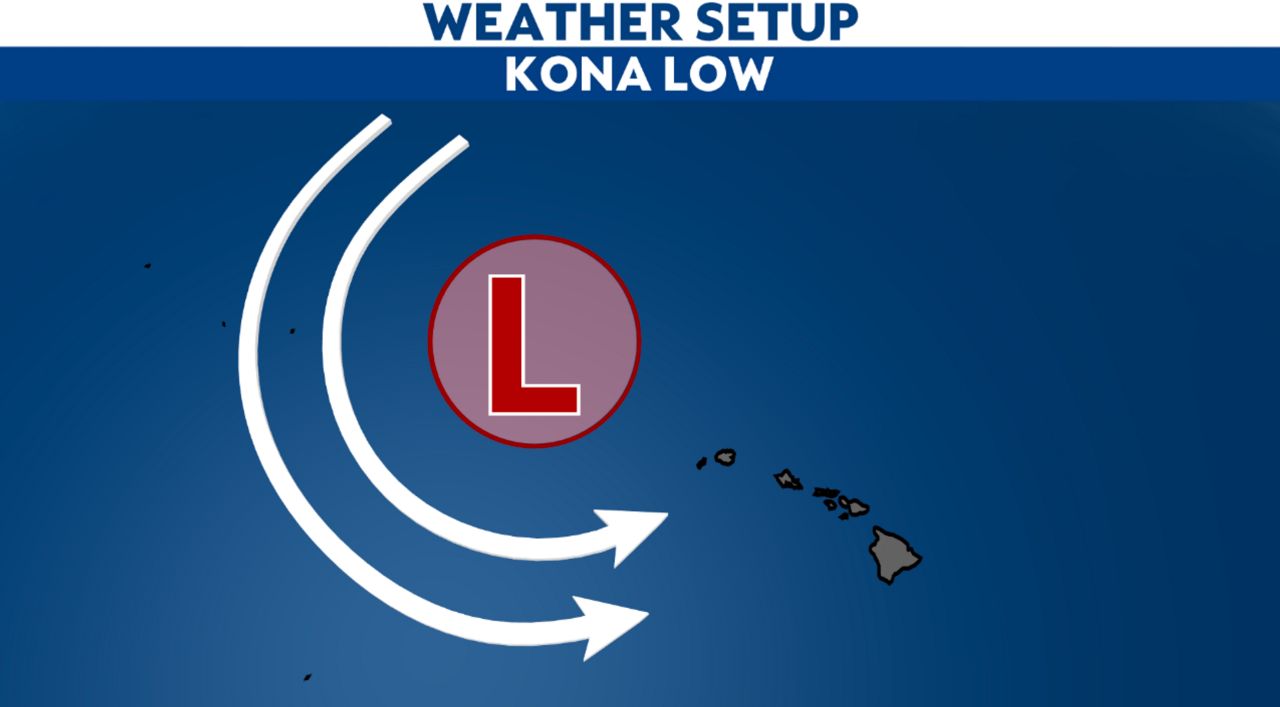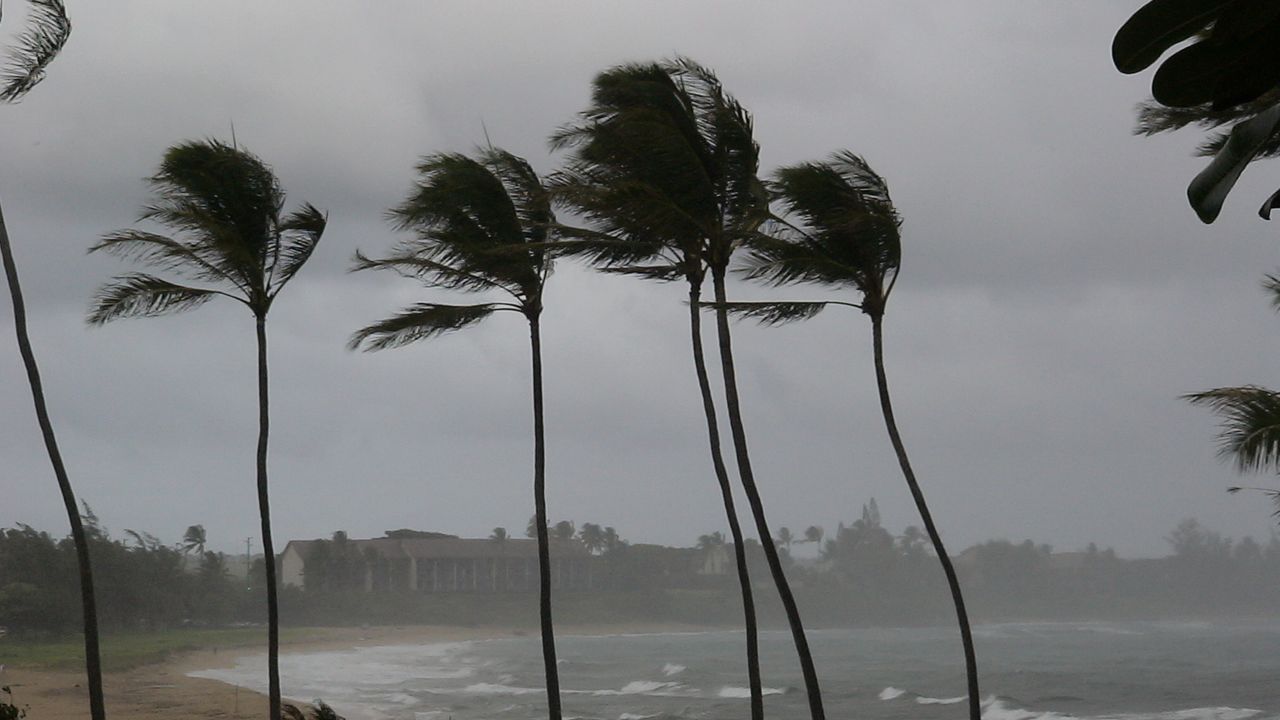Hawaii is no stranger to rain showers and gusty winds, but sometimes they can even become a little too much for the islands.
A Kona Low can bring a mix of extreme weather.
But what exactly is a Kona Low?
It is a subtropical cyclone that forms during the colder months of the year, from October to April. They form when they “break off” from the jet stream that sinks south near the islands.
Trade winds that blow in from the northeast usually control Hawaii’s weather, but when a Kona Low forms, winds blow from a different direction because of the low’s counterclockwise rotation. The winds move in from the southwest, or “kona” side, hence the name.

Since these lows get cut off from the main steering current, they can linger for days around the islands.
The lingering low draws in plenty of moisture and interacts with the state’s topography, dropping heavy rain over the islands for days, leading to landslides and flooding.
These lows can also bring powerful wind gusts over 70 mph, powerful waves, severe thunderstorms and heavy snow over the summits.
The most recent event occurred on Feb. 2023, when two Kona Lows affected the islands. We saw rainfall rates of 3 inches per hour, and over a three-day span, some areas saw over 15 inches of rain. Mount Waialeale received 12.54 inches of rain in just 24 hours.
A Kona Low that occurred in Dec. 2007 brought torrential rain and powerful winds, which caused power outages and road closures. Oahu saw gusts around 70 mph, and the Big Island received over 11 inches of rain while also having Blizzard Warnings in effect for the summits of Mauna Loa and Mauna Kea.
In Feb. 1997, a strong Kona Low pounded the islands. With it, it brought wind gusts around 60 mph, hail and waves close to 20 feet. This low alone caused $4 million in damage.
Our team of meteorologists dives deep into the science of weather and breaks down timely weather data and information. To view more weather and climate stories, check out our weather blogs section.



